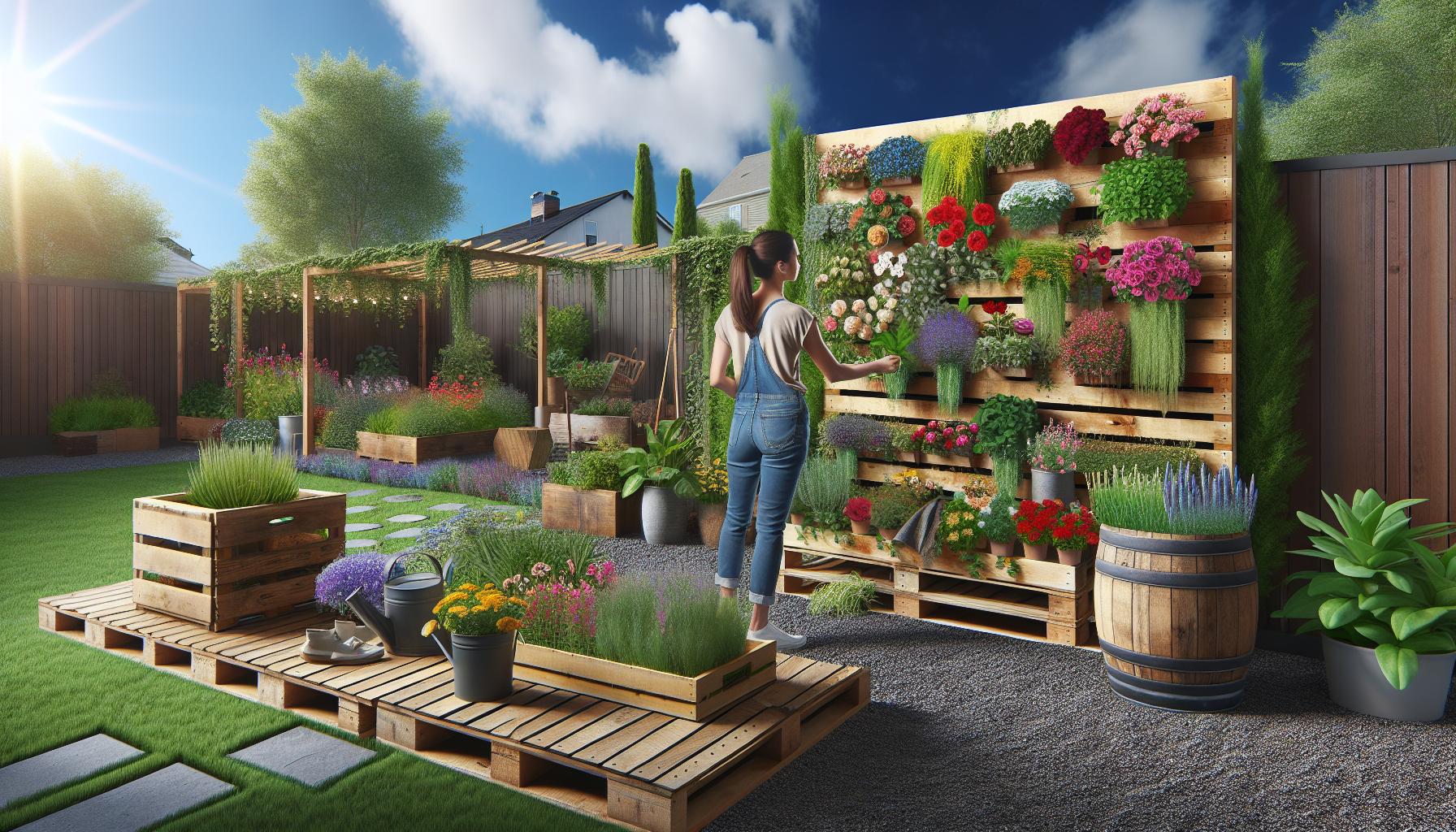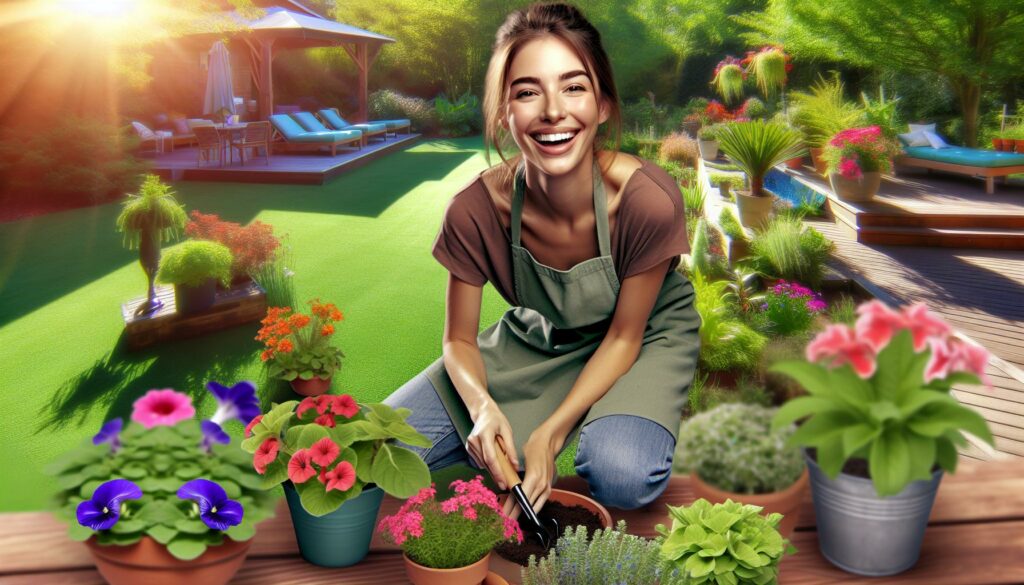There’s something magical about transforming your outdoor space with a little creativity and effort. Garden DIY projects not only enhance the beauty of your yard but also allow you to express your personal style. Whether you’re looking to create a cozy nook or a vibrant flower bed, the possibilities are endless.
Key Takeaways
- Diverse Projects: Garden DIY projects range from simple tasks like planting to complex builds such as raised garden beds, offering numerous ways to enhance outdoor spaces.
- Customization and Personalization: Homeowners can tailor projects to reflect their unique style and preferences, creating a personalized outdoor environment.
- Cost-Effective Solutions: Engaging in DIY projects often results in cost savings versus purchasing pre-made garden features.
- Sustainability Focus: Many projects emphasize eco-friendly practices, contributing to environmental awareness and responsible gardening.
- Essential Tools: Various tools, such as trowels, pruning shears, and shovels, are crucial for successful garden DIY projects, ensuring efficient and effective work.
- Maintenance is Key: Regular maintenance, including watering, pest monitoring, and seasonal pruning, is essential for the long-term success of garden DIY efforts.
Garden DIY Projects
Garden DIY projects encompass various activities that enhance the outdoor environment. These projects range from simple tasks, like planting flowers, to more complex builds, such as constructing raised garden beds. Each project allows individuals to express creativity while improving the functionality and aesthetic of their yards.
Common Types of Garden DIY Projects
- Raised Garden Beds: Raised beds provide better soil drainage, reduce weed growth, and offer easier access for planting and harvesting.
- Garden Pathways: Pathways improve navigation through a garden, guiding visitors while adding structure and design.
- Vertical Gardens: Vertical gardens maximize space, allowing the cultivation of plants in compact areas, utilizing walls or fences effectively.
- Outdoor Furniture: Creating custom outdoor furniture offers a personal touch while providing comfort and utility for relaxation areas.
- Garden Arbors or Trellises: Arbors and trellises support climbing plants, enhancing verticality and adding visual interest.
- Cost Savings: Creating one’s own garden features often results in lower costs compared to purchasing pre-made items.
- Personal Satisfaction: Completing a DIY project delivers a sense of accomplishment, fostering pride in one’s work.
- Customization: Projects can be tailored to fit individual preferences, ensuring a unique outdoor space.
- Environmental Awareness: Engaging in eco-friendly projects promotes sustainability and responsible gardening practices.
By participating in garden DIY projects, I can create a personalized outdoor retreat that caters to my specific tastes and preferences. Planning and executing these projects not only revitalizes my space but also establishes a deep connection to the land and environment.
Popular Garden DIY Projects

Garden DIY projects capture the creativity and personal style that can transform any outdoor space. Three popular projects that yield aesthetic and practical benefits include vertical gardens, raised garden beds, and garden pathways.
Vertical Gardens
Vertical gardens maximize limited space and add visual interest to any yard. I can create a vertical garden using repurposed wooden pallets, hanging planters, or specially designed wall planters. These structures allow me to grow various herbs, flowers, and even some vegetables while enhancing the area’s appeal. It’s essential to select plants that thrive in vertical conditions, ensuring they receive adequate sunlight and are easy to water.
Raised Garden Beds
Raised garden beds improve soil drainage and provide better accessibility for gardening. I build raised beds using rot-resistant materials like cedar or composite wood. Constructing these beds typically involves creating a rectangular frame and filling it with quality soil. This setup allows for organized plant growth, making it easier to manage weeds and pests. Additionally, the height of raised beds minimizes back strain and enhances overall gardening efficiency.
Garden Pathways
Garden pathways enhance navigation and structure within a garden. I design pathways using materials such as gravel, bricks, or stepping stones, which guide visitors through the landscape. Pathways can also help prevent soil compaction in flower beds, ensuring healthy plant growth. Incorporating curvy designs or geometric shapes often adds aesthetic charm and can connect different areas of my garden seamlessly.
Tools and Materials Needed

Engaging in garden DIY projects requires specific tools and materials to ensure success. Below are essential tools to gather and recommended materials to consider for your projects.
Essential Tools
- Trowel: Use a trowel for digging, planting, and transferring soil or compost while ensuring precision in small spaces.
- Pruning Shears: Choose pruning shears for trimming plants, deadheading flowers, and shaping hedges.
- Garden Fork: Utilize a garden fork to aerate soil and break up compacted areas effectively.
- Shovel: Select a shovel for larger digging tasks, such as creating garden beds and moving soil.
- Rake: Employ a rake for leveling soil and collecting debris, keeping your gardening area tidy.
- Watering Can or Hose: Ensure proper hydration of plants with a watering can or hose featuring a spray nozzle for flexibility.
- Gloves: Protect hands with durable gardening gloves that offer grip and prevent blisters.
- Soil: Invest in quality potting soil or garden soil tailored to specific plants for effective growth.
- Compost: Utilize compost to enrich soil and provide essential nutrients for healthier plants.
- Mulch: Apply mulch to conserve moisture, suppress weeds, and enhance soil health.
- Seeds or Plants: Source seeds or mature plants suited to your climate and garden design.
- Landscape Fabric: Use landscape fabric to control weed growth while allowing water and nutrients to penetrate the soil.
- Lumber: Select treated lumber for building raised garden beds and garden furniture, ensuring longevity and durability.
- Bricks or Pavers: Incorporate bricks or pavers for sturdy and visually appealing garden pathways.
Collecting these tools and materials creates a solid foundation for successful garden DIY projects that enhance outdoor spaces.
Tips for Successful Garden DIY Projects

To ensure success in garden DIY projects, careful planning and ongoing maintenance play crucial roles. Here are detailed strategies to enhance garden endeavors.
Planning Your Project
- Define Your Goals: Establish clear objectives for your garden’s design and functionality. Consider factors like aesthetics, purpose, and desired plants.
- Assess Site Conditions: Evaluate sunlight, soil type, and drainage issues. Understanding your environment helps in choosing suitable plants and materials.
- Create a Design Plan: Draft a layout that incorporates plant placement, pathways, and structures. Use graph paper or digital design tools for precision.
- Set a Budget: Outline costs for materials and tools. Prioritize spending to align with your goals while maintaining flexibility for unexpected expenses.
- Gather Necessary Tools and Materials: Compile all required items before starting the project. An organized workspace optimizes efficiency.
- Consider Seasonal Timing: Plan projects according to planting seasons. Some tasks, like planting bulbs, are best executed in specific months.
- Establish a Regular Watering Schedule: Consistency in watering keeps plants healthy. Adjust frequency based on rainfall and plant needs.
- Monitor for Pests and Diseases: Regularly inspect plants for pests or signs of disease. Swift action mitigates damage and preserves plant health.
- Implement Mulching: Apply a layer of mulch around plants. Mulch reduces weed growth, retains moisture, and enhances soil quality.
- Prune Dormant Plants: Trim back overgrowth during dormancy to encourage healthy growth in the following season. Needle-nose pruning shears promote clean cuts.
- Rotate Crops Annually: Change plant locations each year to improve soil health and reduce pest populations. Crop rotation enhances sustainability.
- Feed and Fertilize Wisely: Apply organic fertilizers to nourish plants. Timing and quantity matter; over-fertilization can harm plant growth.
Transform Your Outdoor Space
Embracing garden DIY projects has truly transformed my outdoor space into a personal oasis. Each project not only enhances the beauty of my yard but also reflects my unique style and creativity. From raised garden beds to vertical gardens, I’ve discovered that the possibilities are endless.
The satisfaction that comes from nurturing my plants and watching them thrive is unmatched. Plus, the cost savings and environmental benefits make these projects even more rewarding. I encourage you to dive into your own garden DIY adventures. You’ll be amazed at how a little effort can create a stunning outdoor retreat that you can enjoy for years to come.
